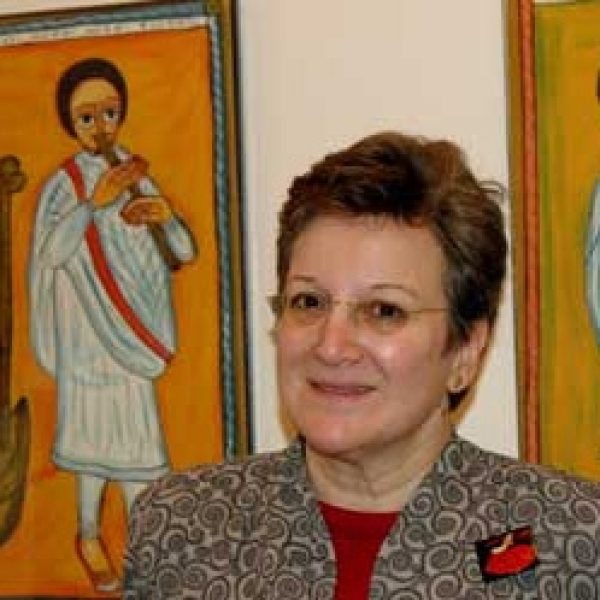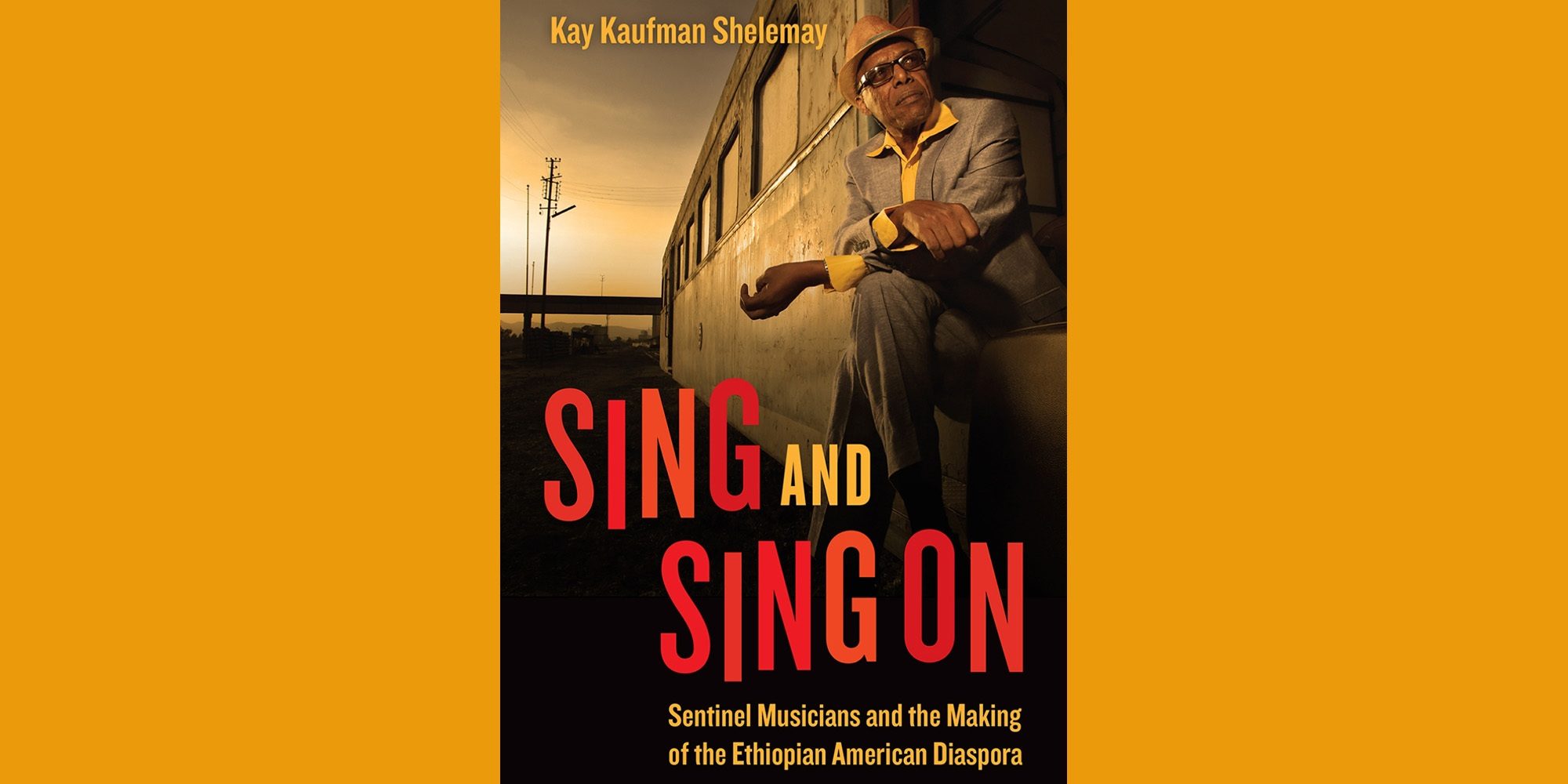Kay Kaufman Shelemay is a professor of music and African and African American Studies at Harvard. She is author of A Song of Longing: An Ethiopian Journey (University of Illinois Press, 1994). Her most recent book is Sing and Sing On: Sentinel Musicians and The Making of the Ethiopian American Diaspora (2022). Back in 2006, Banning Eyre met with her in her office at Harvard for a wide ranging discussion about Ethiopia and its music. This is Part 2 of that conversation, a companion to the Afropop Worldwide, Hip Deep program “Ethiopia: Diaspora and Return.” Click here for Part 1, “Ethiopia: Empire and Revolution.”
B.E: Francis Falceto, producer of the Ethiopiques CD series, makes much of the duration of the Dergue régime. 18 years. That means that people who were young in the so-called "swinging Addis” period, were quite old by the time things opened up again. And young people of that time had no memory of it. For him, that sort of radical disconnect partly explains why young musicians are having a hard time matching the level of creativity that existed during that era.
K.S: There surely was disruption and there was death and dying, and terrible pressures on all the musicians. But Mulatu Astatké survived the revolution and continued working through it. Others survived in diaspora. And there is a new generation that has emerged, who were born in Ethiopia during the revolution, some of whom then came to the States in the ‘90s, actually after the revolution, and now have gone back. So this is by no means a musical wasteland. I think every generation has its music, and I would find it odd if the new generation simply replicated the music of the sixties and seventies.
B.E: Oh, of course. And I don't think that's what Francis is looking for either. What he is missing in the current music is simply a level of creativity. For him, most of the artists seem quite happy to just go into a studio, turn on the drum machine, have nobody playing any instruments at all, and the audience is satisfied with it. Because the market is small, that's all that can be afforded, so people just accept it. I am simplifying his critique, but that's the essence.
B.E: Tell me about Teddy Afro.
K.S: He is from Addis, but he is now centered heavily in Atlanta. He is doing tours all over North America, Europe, Ethiopia. And his work is very interesting, songs about healing, but with a very heavy connection to reggae. I'm seeing a whole generation of bicultural musicians, or musicians who span the Ethiopian homeland and its many diasporic communities, and they are very creative, so they are singing to a different audience. But, yes, the big band tradition that grew out of the fifties and sixties, and was sustained in a very lively way into the seventies, it was truncated by the revolution. Although many if not most of the musicians did survive it, in the process, in the interim, the world has changed.
B.E: Tell me about your recent visit to Addis.
K.S: Well, for me, of course, there was the personal journey of not having been there for many, many years. I could have gone back during the past 10 to 15. I have not. I was involved in other things. I found that Addis Ababa has quadrupled, quintupled in size. It is estimated at 4 to 6 million. It is a massive, overwhelming metropolis now. One sees the impact of the outflow of population too, especially of a middle-class, and educated middle-class, from the country to the diaspora. One tends to have more distance between the very rich and the very poor, with not a lot in between. One sees the impact of investment from Saudi Arabia. One sees a growing Muslim presence. And one sees a country struggling with continued conflict with Eritrea, with economic challenges, with all the usual challenges of life in Africa.
B.E: Was he just visiting Washington?
K.S: Well, he's been there for a few months.
B.E: What about some of these musical figures to have returned to Ethiopia, someone like Amha Eshètè?
K.S: Well, Amha Eshètè is at a later point in his career, and is surely very knowledgeable about the musical scene, but not as engaged in musical life at the moment. But what is phenomenal is the return of people like Abegasu Shiota. Abegasu is a young musician, 40-ish, born in Japan of a Japanese mother and Ethiopian father, grew up in Ethiopia, spent some time from the mid-nineties through the beginning of the 2000s in the United States. He went to the Berkeley College of Music here in Boston. And he lived in New York and in Washington, and did wonderful production on many of the recordings of the musicians that we've been talking about. Abegasu has been involved with Gigi, and with many of the musicians who are recording today. He has produced. He performs on keyboard. He is an honestly creative force, and he has a sound studio now in Addis Ababa. He is involved in teaching young Ethiopians at the Yared School of music in Addis. So he is an example of someone who is, I think, living his life as a musician both in Ethiopia and abroad, and has been both places and might be anywhere at any moment you choose to call him
B.E: Do you think I will have any trouble finding CDs by people like Teddy Afro and Ephrem Tamiru?
K.S: Well, Teddy Afro’s big album Yastaseryal is everywhere. [Editor’s note: In fact I had trouble finding a place to buy this on line. You can order it from Dukem in Washington, D.C. 202-667-8735.] Go on his web site. You'll get his whole concert schedule. Teddy Afro is everywhere. He's traveling constantly. Ephrem Tamiru had a wonderful song that has been very popular in the diaspora since the mid-nineties called “Hagerei,” one of my favorites, “My Homeland.” It's a lovely ballad about Ethiopia and nostalgia. It is of the tizita type, if you like. It’s in the tizita mode. Ephrem Tamiru, when I was in Addis, there were big billboards of this latest album up on Bole Road.
B.E: Was Abegasu Shiota involved with the Admas Band, that US based Ethiopian Band we met a few years ago?
K.S: Oh, Abegasu Shiota was the Admas Band. He and Henoch Temesgen. They are both back in Addis, and they are performing, recording, producing, and teaching. They are very engaged with the musical scene. I suggest that you might want to play the song “Chiffera” or “A Prize of Peace” from the album Indigo Sun. This album is all about reconciliation and peace.
B.E: I know that you are doing ethnography in Washington, DC now. I’m wondering how you feel about the Ethiopian music being recorded there these days.
K.S: I know that there are a million sound studios in Virginia and Maryland and Washington DC metropolitan area. There is a very active nightclub life. Dukem and other restaurants, for example, have Ethiopian musicians. There is a lot of activity. I think when one is dealing with the newly established, diasporic community, there is a need to wait and see. These are people who are trying to reestablish their lives, rebuild, or build new institutions, everything from community welfare organizations to new churches. They are reinventing themselves and their lives, and producing their own music is part of it. I think that the Ethiopian diaspora has been very active musically. There are networks. For example, with the sports events, the big annual soccer event, which was in L.A. this year, has a big musical component. There are concerts all around. There was a concert here just a few weeks ago with leading Ethiopian musicians. There is an Ethiopian cultural life and musical life that is very, very lively at weddings and homes. That it has not yet broken through in the commercial domain is probably to be expected. Also, look at Mulatu Astatké’s music in Jim Jarmusch’s from last year, Broken Flowers. Very, very major appearance of Ethiopian music. Then there are the recordings of Gigi, the recordings of Aster. These have commanded a very wide audience. And they are as much a product of diasporic living as they are of the Ethiopian homeland. So I'm not quite sure what one expects of these new communities at any point in time, but what I see is a vibrant musical culture.
B.E: And there's rap too, right?
K.S: Oh, the rap is extraordinary. I mean, you have all over Africa and in other places in the world now, big hip-hop initiatives. This is part of it, but it is particularly lively in the Ethiopian diaspora. This, in part, I have learned about from my own students who are engaged with hip-hop, and with Ethiopian diaspora. For instance, there are the recordings by Burntface Media, a multimedia collective for hip-hop and alternative music. This is diasporic, but it's both. In other words, that distinction is really blurred. One track is “Mela Mela,” and it features The Profit, one of the performers. Profit, not prophet. Again, one sees this kind of subtle plays on words here. Not exactly wax and gold, but somewhere warm.
B.E: Let's talk about women in Ethiopian music.
K.S: Well, one needs to be careful, because I know the singer Gigi had aroused some controversy at one point for talking about the roles of women in Ethiopian music. But I would say, surely, Ethiopia is a patriarchal society historically, and women's place was very much at home. This has changed in revolutionary and post-revolutionary Ethiopia. It surely was changing in some professions even before that time, and one has always had, for example, female azmaris, who sang, although they did not usually play the musical instruments. In the past, there were aristocratic women in Ethiopian Christian society, who played the baganna, the 10-string lyre, although not so many. Ethiopian women were not on the forefront of public musical life until during the revolutionary period in the Church when young people were unable to congregate in any other context. They began to come to what were called Sunday schools, and in the eighties, during the Revolution, there developed a new genre of Christian hymns in Ethiopia called "Sunday school songs." These are very much involving women, as well as men, and this very quickly translated and was transported to the diaspora, and today, one hears in almost all Ethiopian churches in the US Sunday school songs, and they are sung by choirs. They may be choirs of young men and women, but in some of the churches I've gone to, they are sung entirely by women.
B.E: That's very interesting. I remember both Aster and Gigi talking about that.
K.S: And, surely the church music has influenced compositions in performances of all Ethiopian musicians. Some of Mulatu Astatké’s most interesting compositions are based on melodies and modes from the Church. For example, he has a wonderful piece called "Lent Time," which is inspired by Ethiopian Christian Lent chants. So there is a lot of synergy, and there is a dialogue between the music of the Church and that of other domains. But I think it is important to note that one cannot just partition off these worlds. If they are part of a person’s experience, it moves into their music as well. But we are seeing big changes in the participation of women in Ethiopian music in the popular music domain. And this is particularly interesting and something I am exploring as part of my own work. There are a lot of female singers, and there have always been female, azmari singers, but so far, I have not seen many doing musical, instrumental performance. While in the Church, women both play the instruments and sing, they are mainly just singing in the popular domain.
B.E: That is exciting.
K.S: It is economically tough for these musicians. But it's tough for most musicians. It is perhaps particularly tough for these new immigrants, who are trying to establish themselves, build families, homes, and lives, and also make music. So one should not underestimate the challenges of pursuing a musical career as an immigrant, let's say, to the U.S., or wherever they happen to be. This is not an easy assignment, but there is a lot going on.
B.E: What about Gigi?
K.S: Gigi is really a very interesting figure. She is both well known in Ethiopia and in the diaspora. She lives in New York. She is married to the very well known producer and musician, Bill Laswell. And her work ranges from the traditional to really upbeat, new, hybrid works. I particularly like her song "Ethiopia" from her Abyssinian Infinite, Zion Roots album. It has a very nice vocalise, where she has a wordless, almost improvisatory section, which is very much based on a tradition in Ethiopian vocal music of wordless vocal portions of songs. Bill Laswell is actually playing on this, acoustic guitar and keyboards. And I should tell you that the wonderful washint (flute) player Melaku Gelaw is playing here, and Abegasu does the production and keyboards. There's another wonderful song on here, speaking of the different modes. Her first song on this album is "Bati Bati,” and that is one of the major tuning systems, categories of the melody in Ethiopian sector music. So if you want to hear Bati, this is a great place.
You also have one large and very lively Ethiopian community in Israel. Now this is interesting. From the perspective of Ethiopia, there is an Ethiopian diasporic community in Israel made up of people now known as the Ethiopian Jews, the Beta Israel, formerly the Falasha of Ethiopia. From the perspective of that community, they are now at home in Israel. So again, one has different perspectives on homeland and diaspora, and this is a particularly complicated one. The Ethiopian Jews were an indigenous Ethiopian people who acquired Jewish traditions, and over time identified very, very closely with Jews from abroad, especially in the 19th century when they were actually in contact with Jewish communities abroad as a result of European visitors. In the 20th century, they sought to emigrate to Israel. They were recognized as Jews on a biblical basis, as descendents of the tribe of Dan in 1973. During and just before the Ethiopian revolution, they were seeking to emigrate to Israel, just at the point at which the entire country, speaking of Ethiopia, basically shut down with the revolution
And more recently, Idan Raichel, who is a popular musician, has produced several best-selling CDs in Israel, some of which draw on Ethiopian musicians, melodies, or instruments. One song actually incorporates tracks of an Ethiopian masenqo, the one-stringed Ethiopian violin. This is part of a more global engagement with Ethiopian music, the sort of thing one sees in the case of the Either/Orchestra in Somerville, Massachusetts, a really fabulous jazz band founded and directed by Russ Gershon. Russ heard recordings of Ethiopian music, probably those published by Francis Falceto, and began playing arrangements of Ethiopian music, and he also has moved into collaboration, Russ Gershon and the Either/Orchestra with Mulatu Astatké and other Ethiopian musicians, in concert and in recordings. So what is happening now in Israel is not unique. One sees it in other parts of the diaspora. But it has become very popular within the Israeli musical scene.
The way in which Ethiopians responded to the crisis of the Islamic invasion in the 16th century was to restore and perpetuate creatively the tradition that had almost been destroyed, and invented, for example, a new system of music writing. I would draw a parallel to the period we are now seeing, post Ethiopian revolution, which was cataclysmic for many people and lives within Ethiopia from 1974 to 1991. We are in a very short period since then, and I think we are seeing the creative response, the bouncing back from the period of the cataclysm. Actually, they are really kind of similar, almost in their length of time: a decade, decade-and-a-half of crisis, and then watching the period afterwards in which the people reconstitute traditions from before and move forward with new traditions.
B.E: Thanks so much, Kay. This has been fascinating.
Related Audio Programs
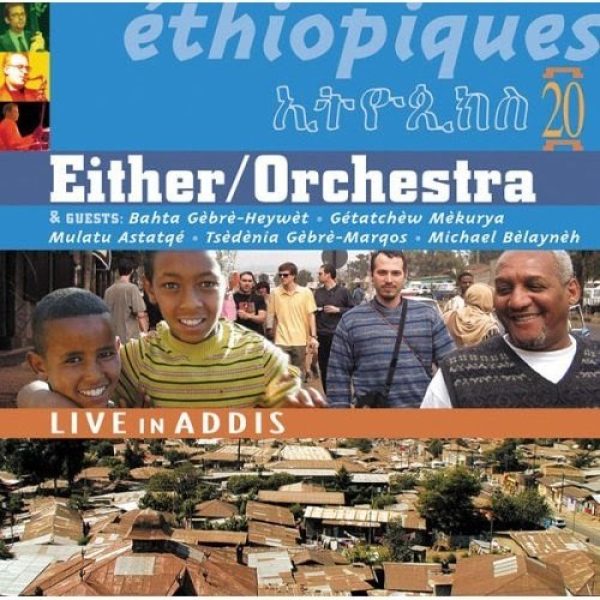
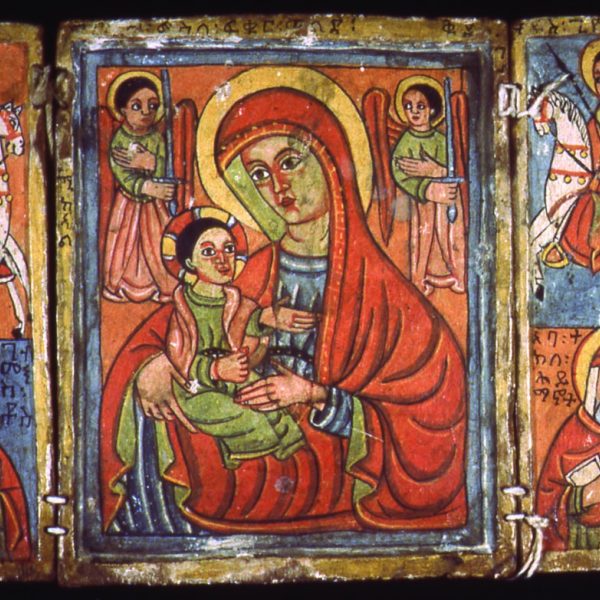
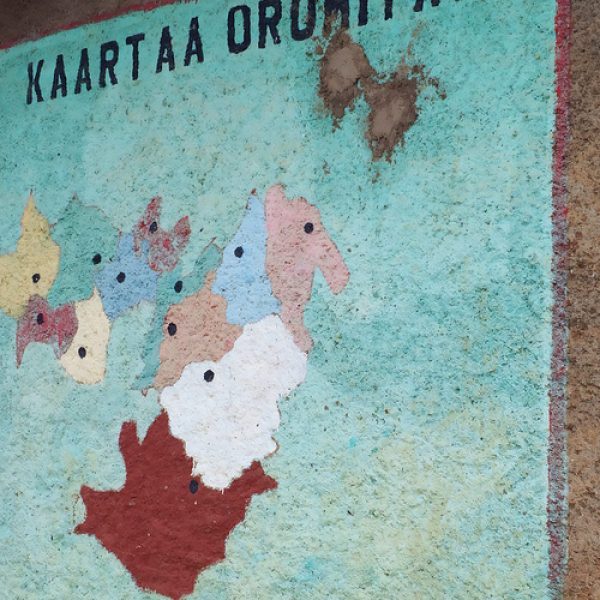
Related Articles
